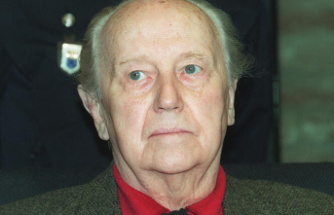For more information
Visit: tabithafarrar.com/2017/02/just-launched-online-global-meal-support-service-eating-disorders
Coaching your meal support coach
Before using Active Eating Disorder Recovery for Adults' meal support service, you can share additional information with the meal support coach before the session, such as:
• The meal that you plan to eat
• What you are working on and want to improve about your mealtime
• Things that you are anxious about and want support with while you are eating
• Things that you would like to avoid conversation about
• Any goals that you have for your meal support session
Tabitha Farrar may be the only person fond of slathering mayonnaise on quiche — partly to make up for 10 years of calories lost during her illness with anorexia and partly to practice enjoying rich foods.
But the Boulder resident never takes comfort with "fear foods" for granted.
In February, she launched an online meal support service so others taking on the same fight could schedule a confidential "meal support buddy" through her business — Active Eating Disorder Recovery for Adults.
"Ideally, a person newly recovering from an eating disorder will not be left alone to eat a meal. They will always have someone there just to encourage them and to keep them from wiggling out of it," Farrar, 35, said.
She has trained several coaches in the United States and in the United Kingdom, where she grew up in rural England, to conduct these scheduled 30-minute sessions with people struggling with anorexia and other eating disorders.
"The great thing is that we offer peer support, not professional support," she said. "That means it's way more affordable at $25 per session."
At her worst, Farrar could eat only enough to keep herself out of hospitals. People mistook her for a lanky teenage boy even though she describes her hair "as thin as an old woman's" due to malnutrition. Eventually, three gyms in England kicked her out for over exercising — sometimes for six hours a day, she said.
"But through all of this, I have learned that to be successful in recovery there can't be an elephant in the room," Farrar said. "People need to talk about it and get support when they sit down to eat because life stops until you start doing that."
Daily Camera: What triggered your eating disorder?
Tabitha Farrar: In 1998, when I was 17, my summer job was exercising race horses. There was a three-year old mare named Kitcat, a chestnut thoroughbred, that I wanted to ride. But I am six feet tall, and I remember one of the jockeys coming up to me and telling me that I might be a little bit too heavy for her. So, I set out to lose just seven pounds — to go from 147 pounds to 140 pounds. But something about that triggered the illness in me. I thought that being lighter would give me more rise on her. From there, the illness only got progressively worse, and I suffered through 10 years of malnutrition — severe starvation.
DC: Did you know that you had a problem?
TF: Well, I hated looking in the mirror. I couldn't look because I thought, "Oh, my God. I look terrible!" But there is something that people with eating disorders share with people who struggle with schizophrenia. Our brain doesn't always know that we are sick, or we don't know how sick we are. So, people suffering from eating disorders need to know that they alone can't trust that they're better. To keep myself in recovery, I need to do a lot of management. One of these things is going to someone else that I trust to tell me if I need to eat more. For me, that person is my husband. And there's no argument when he encourages me to eat more.
DC: What caused you to hit rock bottom and reach out to recover?
TF: Well, most of us come to a point where we are just so tired of it. All of the rules and rituals we keep around eating and exercising turn into a prison. Also, when you are sick like this you need to have something to tell people when they ask why you do what you do. I would tell people that I loved to run even though I hated it. And that is also part of the problem — that an eating disorder can turn an honest person into a bald-faced liar. For instance, when I was sick I told my parents that I ate at a friend's house when I hadn't eaten in three days. I would hide food and arrange food on my plate in clever ways to look like more. But after so many years of all the rituals and the lies and the chaos — it just made me so resentful. It was hard for me to hold a job or form relationships. With all this going on, there's no room for anything or anyone else ... The huge gift of recovery is that I can fully be present with other people now. I can think about other things now. I can set up a business like the meal support service now.
DC: What typically keeps people from attempting recover from anorexia?
TF: The scary thing about this illness is that it feels quite natural and right not to eat. And if we don't eat for a very long time we go into an energy deficit that feels wonderful and calming — soothing. So, in recovery every meal time can feel like sitting with what you're afraid of, like sitting in a room with snakes or spiders that you're afraid will bite you ... Plus, there is still so much stigma and shame around eating disorders. Most people just feel so embarrassed. "Why can't I just eat my food?"
DC: How would you describe your recovery experience?
TF: It should say this. Anxiety actually peaks in recovery. It gets worse than it was because you're now doing all the things the illness doesn't want you to do. It's like walking toward a rattlesnake. It's like you're aggravating it, and that makes it get angry and start hissing ... When you challenge the eating disorder, you get these huge flare ups — I call them eating disorder tantrums. It's helpful to know that if you give into it, it will only get worse. So I learned to affirm that the anxiety is real and powerful and also to keep reminding myself that I need to eat.
DC: How does your cheese sandwich illustration work?
TF: I know it's scary for some people with eating disorders to even think about recovery. But I like to say that you have to eat that cheese sandwich. It's the only way that you can make all this stop and get your health back — by refusing to do what the illness wants you to do. That's why, with the cheese sandwich example, that doesn't mean eating a half a cheese sandwich or a cheese sandwich without butter on it. The illness will do that. It will try to sabotage you at every step — in the grocery shopping stage of buying bread made with less fat or calories to skipping buttering the bread for the sandwich. People need to be aware of that.
DC: What are your most famous showdowns with your eating disorder?
TF: Recovery is not a magic trick. You have to eat, and part of doing that is getting past viewing food as scary. But I have learned to treat the illness like a toothless dog. It can be barking at me, but it can't bite me. So, when I took it on, I just got cocky. When I'd walk by McDonald's, the eating disorder would say, "You can't have that!" And I'd be like, "Watch this!" Same thing when I would pass an ice cream shop ...
When I committed to eating again, it was a real and memorable moment for me. It was when I started considering food as the medicine I needed. I still got up from the table four times during that first simple meal of an egg and rice. But to sit down and finish eating I told myself this: "You can eat crying. You can eat shaking. You can eat terrified. But you still have to eat." And the best part is that it gets easier every time.
Tabitha's Favorite Quiche
1 pre-made unbaked pie crust or dough ball
1 cup mixed vegetables (onions, red peppers, spinach), chopped
6 bacon strips, chopped
5 eggs
1/2 cup whole milk or cream
Salt, pepper and mustard powder, to taste
5 or 6 cherry tomatoes, chopped
Cheese of choice — grated Swiss, cheddar, Gruyere or even crumbled feta
Directions: Roll out dough, and press into a 9-inch pie tin. Fry bacon with a dash of butter, and allow to cool. Mix with vegetables, and spread evenly in the bottom of the pie crust.
Whisk eggs, milk or cream, and seasonings together. Stir in the tomatoes, and pour over the bacon and vegetable mixture in the pie crust. Then, sprinkle quiche with a thick layer of grated cheese.
Bake in an oven preheated to 350 degrees for 40 minutes or until top browns. Slice, and serve with mayonnaise and chips or bread or rice.
Makes 6-8 slices.
Source: Tabitha Farrar
Pam Mellskog can be reached at p.mellskog@gmail.com or at 303-746-0942.
Our editors found this article on this site using Google and regenerated it for our readers.












